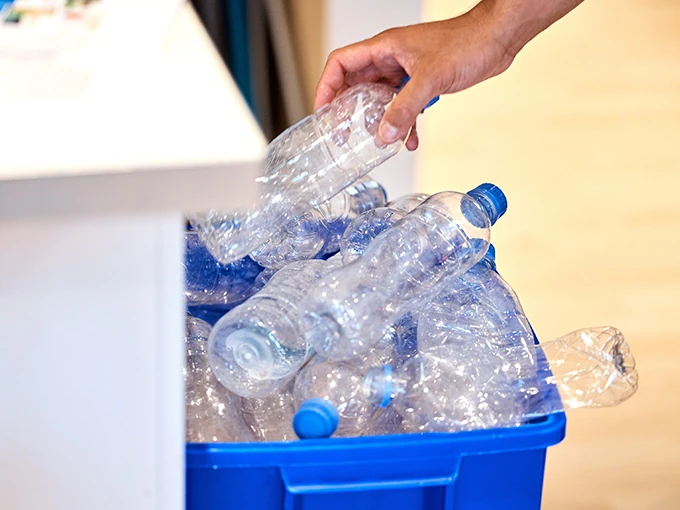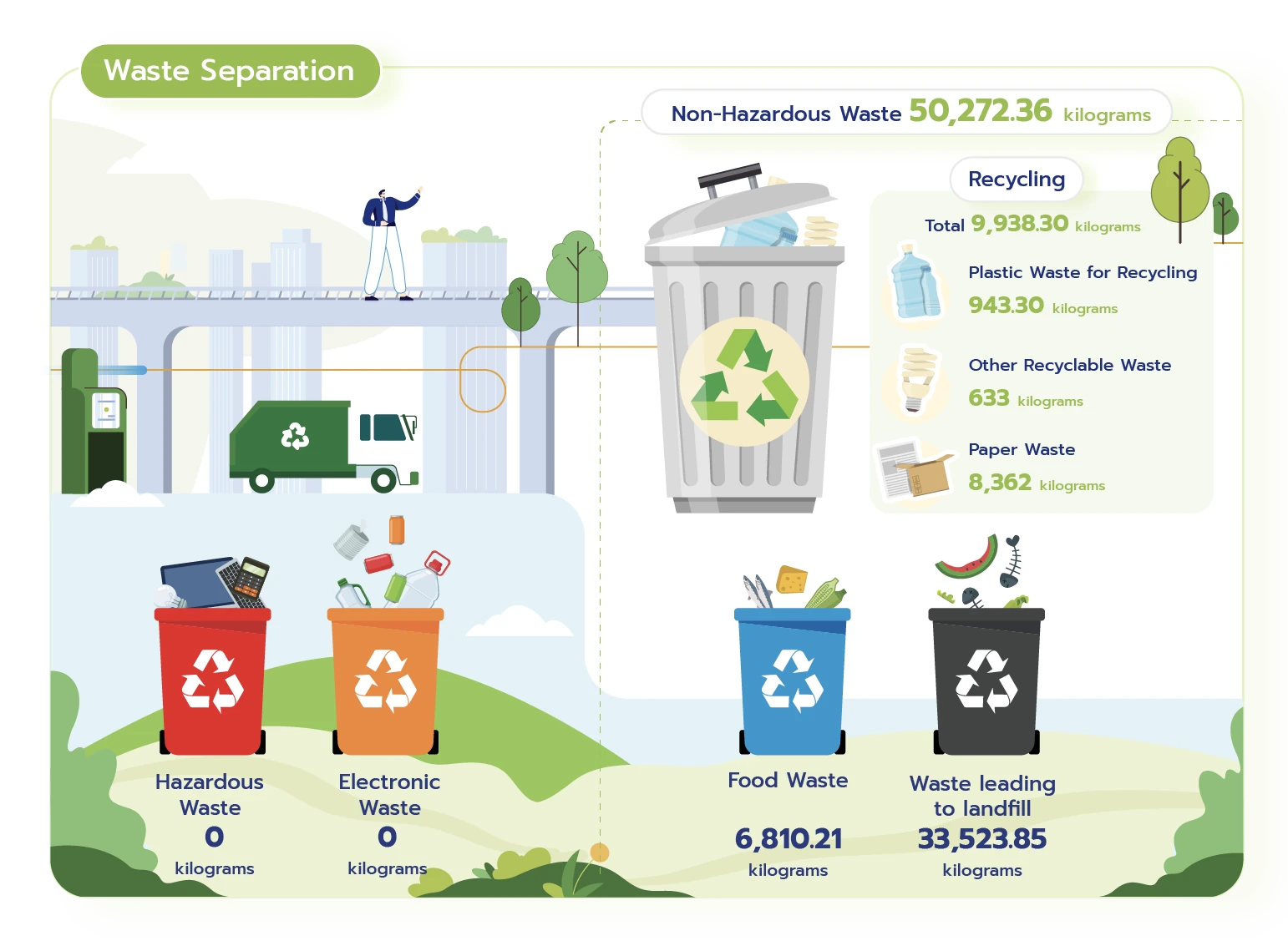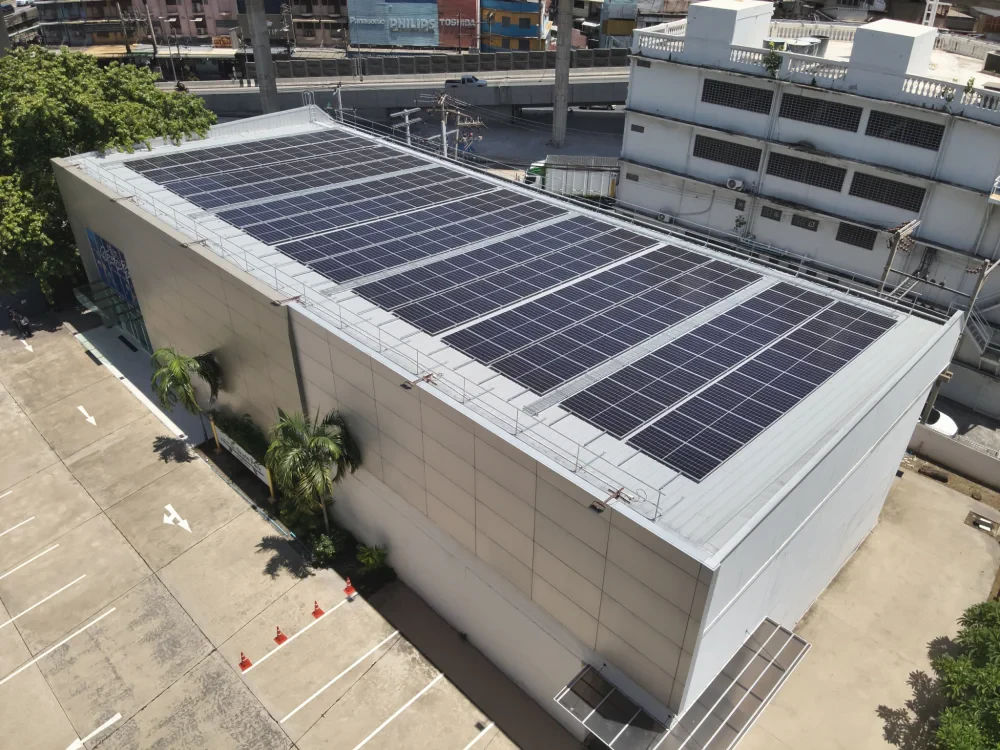
Pollution and Resources
Organizational Importance and Commitment
The Company had determination to promote and support the management of all types of resources worthily for better efficiency in its business operation and competitiveness. The Company also promoted the corporate culture, roots the employees’ awareness in minimizing the waste and reuse, process improvement, and applies some technologies to support the management wisely. This is to enhance a balance between the economic growth and care for the environment and natural resources, which would lead to the sustainable business operation.
Opportunities and Impact
The Company realized an expectation from all stakeholders in its business operation on the route of sustainability. Except the creation of economic value and profit, the Company also considered how to operate the business based on environmental responsibility. Therefore, the Company formulated the corporate strategy to minimize the impact to the environment caused by the Company’s operating process through the environmental management policy and efficient resource management measures. This would help minimize the risk of non-compliance with law on environment that would lead to fines or penalties and impaired corporate image, and give chance to develop products and services serving the customers’ demands in the low-carbon trend at present.
Supporting the SDGs Goals
Goal 7:
Goal 13:
Stakeholders Directly Impacted
Goals and Performance
| ESG Performance Indicators and Targets | 2024 Performance Results |
|---|---|
| Electricity consumption does not exceed 2,953,500 kilowatt-hours compared to the volume as of base year 2020. | 2,672,703.41 kilowatt-hours, or decreased 9.51% |
| The ratio of total electricity consumption to the total number of employees is less than 5,000 kilowatt-hours per person per year. | 5,356.12 kilowatt-hours per person per year. |
| The amount of renewable energy consumption increased by 2.5% compared to 2023. | 221,116.19 kilowatt-hours, increased 170,940.87 kilowatt-hours, or 340.69% |
| The amount of water used for consumption in the office does not exceed 25,000 cubic meters, compared to the amount as of the base year 2020. | 12,581 cubic meters, increased 49.68% |
| The ratio of total water consumption to total number of employees is less than 57.28 cubic meters per person per year. | 25.21 cubic meters per person per year. |
| The amount of waste sorted and sent for recycling totaled 5,600 kilograms, which is equivalent to the greenhouse gas reduction absorbed by 3,000 trees. |
16,748.51 kilograms 7,581 trees |
| Manage food waste to reduce it by 20% from the total amount of food waste | 6,810.21 kilograms, or equivalent to 33.33%. |
Management Guidelines
Strategy
Management
Environmental Management System
The Company has developed an Environmental Management System (EMS) systematically to manage environmental impacts resulting from its operations efficiently. This includes planning, implementation, control, evaluating, and monitoring environmental operation results. The Company demonstrates a commitment to responsible resource and environmental management, complying with relevant regulations, integrating goals and indicators at both organizational and departmental levels to drive environmental operations organization-wide. Continuous monitoring, reporting and disclosure emphasize transparent and accountable environmental stewardship practices, building confidence in regulatory compliance and sustainability.

Energy Management Plan
The Company set up the Energy Management Working Group to efficiently define any energy management plans and measures. Also, the Company has regularly promoted the energy conservation through various programs and activities such as campaign for use of elevators, energy conservation in different ways, making public relations media and campaign signs displayed in many sites in the office building, making some video clips to educate and campaign about the safe use of energy, period of turning on and off the lights and air-conditioning system, installation of solar rooftop on the office building, etc. The Company placed the policy to reduce the power consumption, and to support the use of alternative energy in its business operation process, depending on context and appropriateness.

Water Management Plan
The Company has established a policy and plan for responsible water management for office consumption to continuously reduce pollution and negative impacts on society and the environment. This includes conducting campaigns to encourage employees to use water efficiently and appreciate its value in daily life, such as posting water-saving reminders near washbasins to raise awareness. Additionally, the Company has implemented an effective wastewater management system by systematically treating wastewater from office buildings before discharging it into the public drainage system, to prevent adverse effects on the surrounding community environment. The Company recognizes the challenges related to setting goals and strategies for more efficient water management and will review and seek appropriate practices to further enhance the efficiency of water resource management going forward.
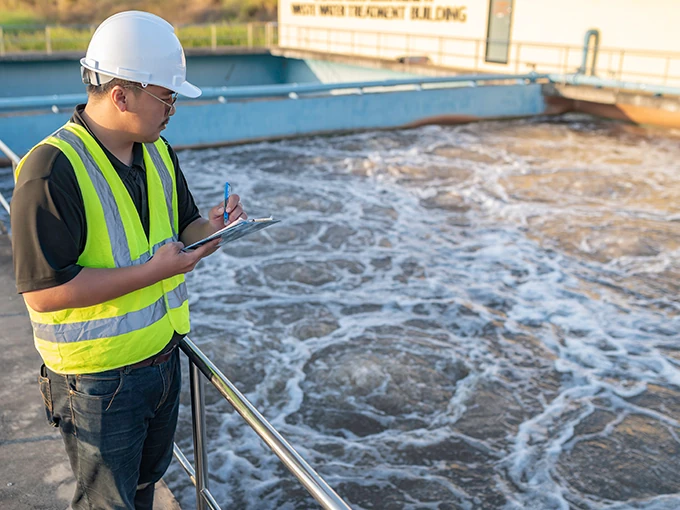
Waste Management and Landfill Reduction Plan
To ensure effective management of waste and residual materials, the Company has established standardized procedures for waste segregation, including hazardous waste management, to be consistently applied across the entire organization. Moreover, the Company actively promotes awareness of waste reduction throughout its operational processes and business activities along the value chain. Employees are encouraged through communication campaigns to minimize the use of unwanted materials generated from operations and to manage waste responsibly. The Company follows the 3Rs principle: Reduce, Reuse, and Recycle, which serves as a guiding concept and practice for the efficient use of available resources and helps reduce overall waste generation. Clear waste separation pathways for each waste type are implemented through awareness campaigns. The Company also provides education to communities and schools on waste segregation, integrating these efforts with the Company’s social responsibility activities.
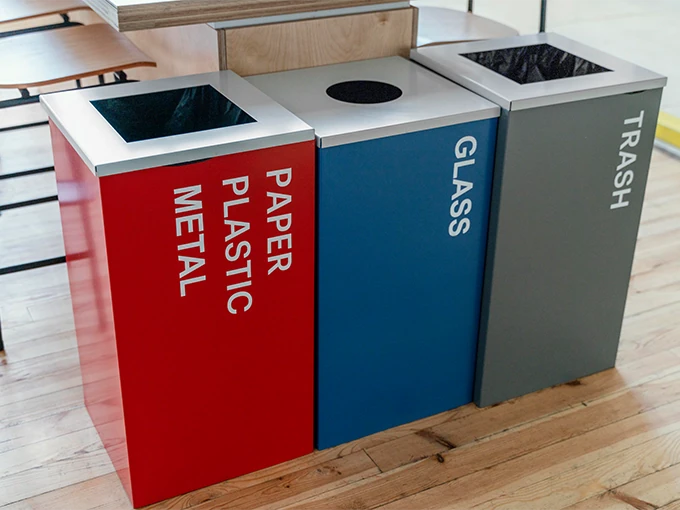
Key Developments

